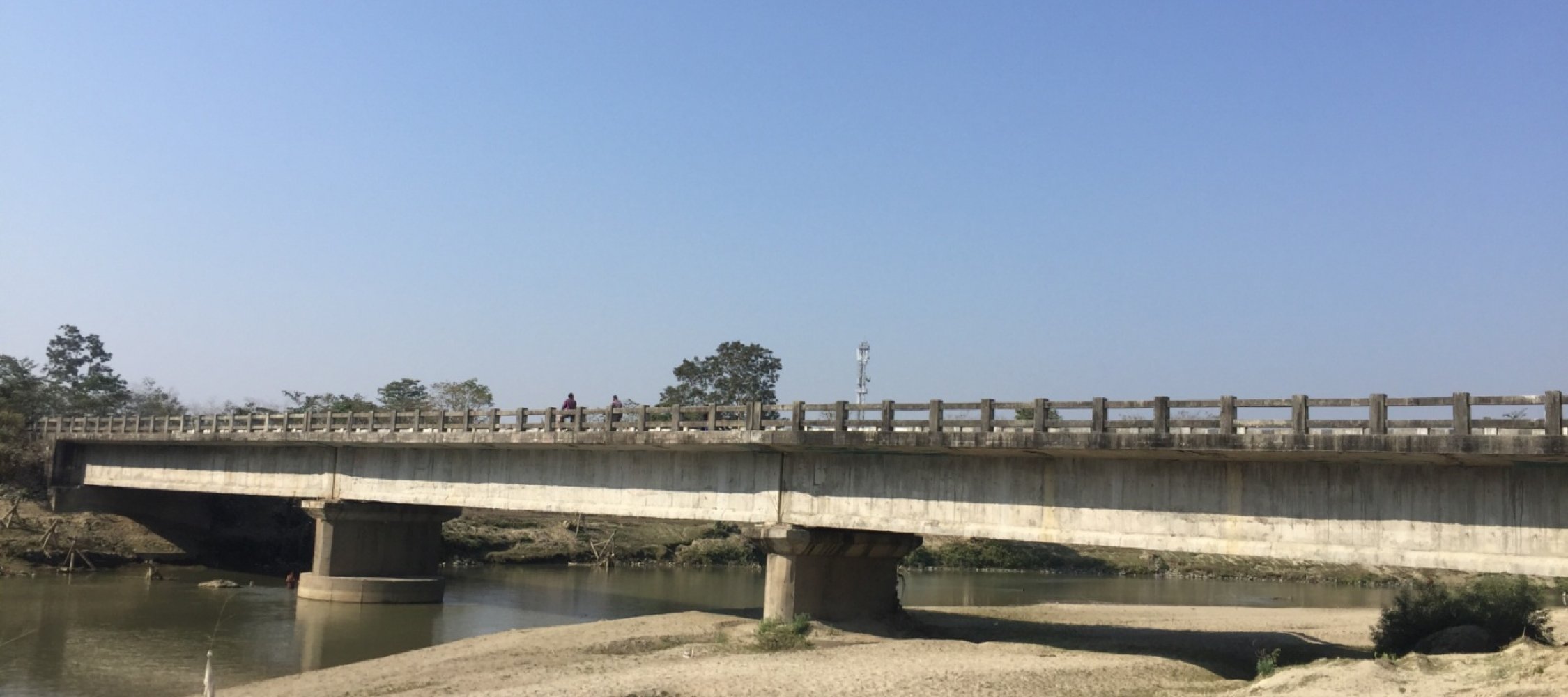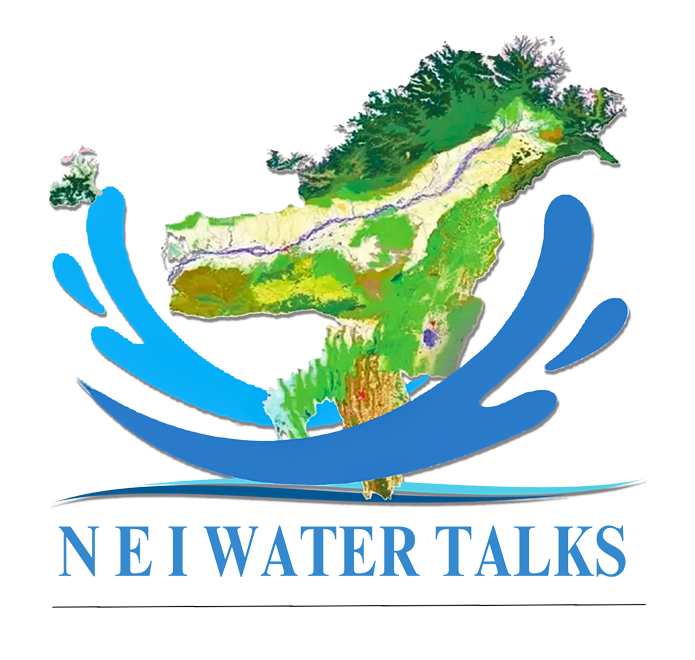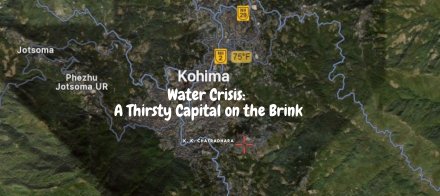 |
During my childhood, whenever we wanted to visit our ancestral village Chaibari, we had to cross the Kaldiya river. My memories of the river are many – from vivid to blurry. For many years, there was no proper bridge over the river, connecting Chaibari with the neighbouring Rihabari, where people of Chaibari had to go to buy household items. Moreover, as Chaibari did not have a high school, students aspiring for high school education had to come to Rihabari high school on the other side of the Kaldiya river.
Chaibari is one of the oldest villages in the Barpeta district (now under the newly formed Bajali district) of Assam, India. It is situated 5 km away from Jalah, the district headquarters, Baksa and about 15 km away from Pathsala town in the Bajali district. Chaibari village has a total population of 1,516 people, comprising 333 households (Census 2011). More than 90 per cent of the village population is indigenous Koch community, which has been living there since time immemorial.
My father, Manoranjan Das, 77, studied in the Rihabari high school. He had to swim across the Kaldiya river during the monsoon season to attend the school. His friends, who were too lazy to swim the river, could not complete their high school education. That way, for the students of Chaibari village, Kaldiya was a major impediment to the pursuit of higher education in those days. My father vividly remembers his daily struggle with Kaldiya, especially the difficulty in swimming while trying to protect the books from getting wet. In one of our conversations, he told me how he had carried the school textbooks safely while swimming across the river. He used to place the umbrella upside down on the surface of the river and put all the textbooks on the floating umbrella. He would hold the books-laden umbrella by one hand, slowly pushing it forward, and use the other hand for swimming to reach the other side of the river bank. Once, in an unfortunate incident, while swimming, the umbrella suddenly slipped away from his hand, and Kaladiya pulled down the umbrella along with the books. Such is the Kaldiya river, like any other river, beautiful but cruel.
I remember crossing the river through a single pole-bamboo bridge during the wedding of one of my uncles in 1987. The other way to reach Chaibari from Rihabari in the 1980s was the small narrow bridge built alongside the sluice gate over the river. The sluice gate, popularly known as bund (dam or embankment), was constructed in the mid-1970s to tame the Kaldiya river, which used to cause heavy floods. The course of the river changed due to this sluice gate, and later degenerated into a ‘Mora or dead Kaldiya’. One can still spot the Mora Kaldiya near the bund.
With the construction of the bund, the character and behaviour of Kaldiya river was slightly regulated. Prior to that, the river was truly a Kal, meaning death or danger. As my mother Madhabi Das, 67 says, “Before the construction of the Bund, Kaldiya means Kal-diya or the gift of death; who would dare to face the wrath of the river? People who see the present Kaldiya see a considerably moderate version of the old deadly river”.
In reality, Kaldiya has not calmed down much. It is still in the news for the trouble it causes every year by contributing to flooding in lower Assam along with other tributaries. In June 2020, the increasing floodwater of the Kaldiya river had breached an embankment at Barnali, Bajali, and a ring bund at Barbhaluki of Bajali, affecting many villages. However, flooding in Bajali areas nowadays has a link with the Kurichu hydro power project of Bhutan. According to a media report, in 2020, many areas of Barpeta district were flooded due to the incessant rainfall during that period, and the release of excess water from the Kurichu Hydro Power Plant of Bhutan. It took time for the people of lower Assam (Barpeta, Nalbari, and Kamrup districts) to figure out the fact that sudden devastating floods were mostly caused by water release from hydro power projects in Bhutan.
The Kaldiya river is originally known as Bahbari Noi in Bhutan. It takes the name Kaldiya only after submerging Baga Nai and a few small fingertip tributaries in the Urni Beel location.
Kaldiya runs 5 km towards the east in between Batabari in the north and Dumni tea estate in the south and takes up a few streams on its way. At Dhanbil, the Daijina Noi joins the Kaldiya at its right side. Trailing south by 5 km from Dhanbil, the river traverses around Gokagaon. From there, the river takes a straight southward journey. On its way, it takes a number of fingertip tributaries. The Maranadi, with the name of Dekadong comes from north of the Niakshi area and runs south of Dumni tea estate. On its sojourn, Dekadong takes up Gerua Noi and a number of insignificant streamlets, finally merging with Kaldiya at Bakuagaon. Trailing further south, about 4 km joins the Pohumara at Theka colony. The Kaldiya, therefore, is a tributary of the river Pahumara. The Kaldiya and the Pahumara meet and flow together assuming a new name, Chawlkhowa, covering a distance of 3 km southwest of Sundardia. The Chawlkhowa travels further west and reaches the Barpeta town. From there, the Chawlkhowa is known as Nakhanda, and after about 4 km from the Barpeta town, the river takes up the Mora Manah and Palla rivers by the right. At Bhatkuchi, it again changes its name to Bhelengi, flows 8 km south, and reaches Mandia Pathar. And further south, the Bhelengi joins Beki at Baghbar and then finally falls into the Brahmaputra. The Kaldiya, therefore, is a part of the Beki hydrological system, as well as the larger Brahmaputra basin.
The same night, when my mother, the bride, was coming to Chaibari, she had to cross the river. As the new bride hesitantly put her steps on the bamboo bridge to cross the river, she was overwhelmed by fear and immediately pulled herself back. She recalls, “I literally stepped on the flowing water instead of the bamboo pole. I got frightened and stepped back, as I did not know how to swim. I was so scared that I was not willing to cross the bamboo bridge, which was under water. However, I saw other people who accompanied the groom easily crossing the bamboo bridge. Later, my husband and his friend held my hands from both ends making sure I didn’t fall. Then we three walked together on the bamboo bridge and crossed the river.” Interestingly, my father never talked about this incident.
As a young boy, when I used to visit Chaibari during a vacation, I saw Kaldiya as a source of fun for all of our cousins, particularly at the time of bathing. Of course, those days everyone in the village would go to the Kaldiya river for bathing or swimming, and so did I! Bathing was not just a small activity, it was an event. It was not only the boys but also the girls who used to go to Kaldiya for swimming on a regular basis. I remember Bhadra baidew, Manju baidew, Hemo baidew, Rita, Gita, and others, who used to go in groups for bathing and to wash clothes in the river. The river was far, but we could almost see the embankment from a distance, as there were open paddy fields up to the river, and no human settlement at all. The girls would disappear gradually from eyesight along with their frolicking sound. Then they would reappear after hours, completing their bathing and washing.
Recalling the old days, one of my aunties from the village, 60-year-old Jelee Das, said, “In those days the main gang to go to Kaldiya river for swimming and bathing were the girls, led by my sisters-in-law. It was an everyday activity. When it comes to bathing, the option was mostly the river. On other occasions, our pond was also used for bathing. It is actually the backside pond where everybody learned their first swimming lesson. Only after learning how to swim in the backyard pond, our boys and girls would go to the Kaldiya river.” Jelee aunty further added, “Things have changed now; there are only a few who go to Kaldiya river for bathing. Not even the pond is used so often. We have a motor pump, like many in the village. We use running water nowadays.”
Nibedita Das, 33, too echoed the same feeling as Jelee khuri. During our conversation she said, washing clothes was always done in the Kaldiya river. And after that, bathing was also done in the river. Actually, bathing and washing clothes were two activities, which were conducted together earlier. “Nowadays, nobody goes to the river to wash clothes,” she said. Maybe that’s a good sign as pollution of the river is a concern.
With people from the villages migrating to towns and other places for livelihood, Chabari looks a bit deserted. Not a single herd of cows I encountered during my visit this time. During our childhood, we always had to make way for cattle to pass by. That smell was almost a part of the identity of the village. The bullock carts, then a ubiquitous carrier and a mode of village travel, too, had disappeared.
Along with the world, this village, with a population of less than 2,000 , has witnessed many changes in the last few decades. However, the Kaldiya still flows, connecting villages, land, and people.
The Kaldiya has a bridge over it now, which was constructed a few years back during the time when my father was an MLA of the area. Chabari is easily accessible now. No need to take the longer route around the sluice gate any more that we had taken earlier. However, the quiet environment on the banks of the river is disappearing. People are gradually moving closer to the river and settling down. On the Rihabari side of the river, we can see a cluster of houses. More houses would come up in the future, and then the man-river conflict would increase.
The Kaldiya is a small but magnificent river. I still remember in winter as a child I crossed the river hanging on the folded hand of Troilokya Das, one of my uncles known for his hunting skills. He walked through the river, as the water level was low in those days, resting the single barrel gun on his shoulder. Maybe the water level was around two feet, for which he would ask me and my brother to hang onto his hands so that we do not touch the water. Such is the Kaldiya; sometimes you walk on it, and sometimes it will run over you if it wishes. With time lots of changes happened around Kaldiya, but it will continue to flow, hopefully!
Geolocation is 26.383386256149524, 91.1514936207784


